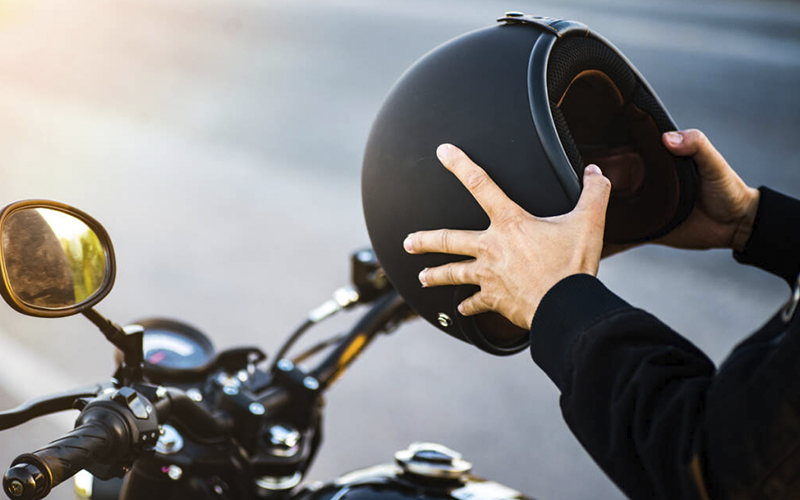For motorcycle enthusiasts, there’s nothing quite like the thrill of hitting the open road. The wind rushing past, the hum of the engine, and the sense of freedom that comes with each ride create an experience like no other. However, as thrilling as riding is, it comes with risks—especially when it comes to safety. One of the most important pieces of gear for any motorcyclist is the helmet. It’s the first line of defense in the event of an accident, and in many places, wearing one isn’t just a smart choice—it’s the law.
In California, a state known for its motorcycle culture and picturesque riding routes, the laws surrounding helmets have recently been updated. While some riders may be familiar with the basics of helmet laws, the new regulations require a deeper understanding, especially for those who ride regularly or plan to take on California’s iconic roadways. Whether you’re a seasoned motorcyclist or a novice just starting your journey, staying informed about these updates is crucial for your safety and legal compliance.
This blog will break down the new helmet laws in California, what they mean for you as a rider, and how you can stay safe and fully compliant while enjoying your ride. By the end of this post, you’ll have all the information you need to navigate the new regulations and continue enjoying your motorcycle safely and legally.
The Importance of Helmets for Motorcyclists
Before we dive into the specifics of the new helmet laws, it’s important to understand why helmets are so crucial for motorcycle safety. Motorcycling is a risky activity, and the statistics prove it. According to the National Highway Traffic Safety Administration (NHTSA), motorcyclists are 27 times more likely to die in a crash per mile traveled compared to passenger car occupants. The risk of head injury in a crash is significantly higher for riders who aren’t wearing helmets.
Helmets are designed to protect the most vulnerable part of your body—the head. A properly fitted helmet can prevent severe brain injuries or even death in the event of an accident. It’s not just about comfort or style; it’s about protection. The new laws in California reflect the state’s ongoing commitment to improving rider safety and reducing fatalities on the road.
Overview of California’s Motorcycle Helmet Laws
California’s helmet laws are among the strictest in the United States, and for good reason. With millions of motorcyclists on the road, the state is determined to ensure that riders stay safe, especially considering the number of accidents that involve head injuries. The laws are intended to create a safer riding environment while maintaining the freedom of the open road.
1. Mandatory Helmet Use for All Riders
One of the most significant aspects of California’s helmet law is that it applies to all motorcyclists, whether they are the rider or the passenger. In California, both drivers and passengers are required to wear a helmet that meets specific safety standards. This is a departure from some states where only young riders or those riding in certain conditions are required to wear helmets.
The law mandates that helmets be worn at all times when riding a motorcycle, regardless of the type of trip or how short the distance may be. Whether you’re riding to the store down the street or heading out on a long road trip along the coast, you must wear a helmet. This law helps ensure that all riders, no matter their experience level, are protected in case of an accident.
2. DOT-Approved Helmets
To comply with California’s helmet laws, the helmet must meet the safety standards set by the U.S. Department of Transportation (DOT). Helmets that pass DOT testing are designed to offer maximum protection in the event of an impact. These helmets are made of materials that can absorb shock, reduce the risk of severe head injury, and offer sufficient coverage to protect both the skull and the brain.
When purchasing a helmet, make sure it has the DOT sticker on the back, which indicates that it meets the required standards. A helmet without the DOT certification is considered illegal to wear while riding in California. As a rider, you must ensure that the helmet you choose is properly certified to offer the necessary protection.
3. Properly Fitting Helmets
It’s not enough to simply wear a helmet—you must wear one that fits properly. California’s law requires that the helmet be securely fastened at all times, ensuring that it stays in place during a crash or sudden movement. A helmet that is too loose or improperly fastened won’t offer the level of protection you need in an accident.
A helmet should fit snugly around your head without causing discomfort. The chin strap should be securely fastened, and the helmet should not move around when you shake your head. If a helmet is too large or too small, it will not provide the necessary protection in the event of an impact.
4. Helmets for Riders of All Ages
California’s helmet laws apply to all riders, regardless of their age. This includes both adults and children who ride motorcycles or scooters. While some states only require younger riders to wear helmets, California takes a more universal approach, recognizing the importance of helmet use for everyone on the road. Whether you’re riding as a young adult, a seasoned motorcyclist, or a passenger, wearing a helmet is a legal requirement in California.
Why the New Helmet Laws Are Important
The updates to California’s helmet laws reflect ongoing efforts to improve rider safety and reduce fatalities. Helmets are proven to save lives, and the state’s goal is to minimize the number of preventable deaths caused by motorcycle accidents. With the growing number of motorcyclists in the state, the authorities have become even more committed to ensuring that riders are well-protected.
The new regulations are designed to ensure that helmets are both effective and comfortable, promoting consistent use. By mandating that all riders wear properly fitted, DOT-approved helmets, the state is not only making the roads safer but also ensuring that riders have the proper gear to handle the risks associated with motorcycling.
How the New Helmet Laws Affect Riders
The new laws in California may have a few implications for riders, both in terms of legal requirements and the types of helmets available. Here are a few key takeaways that riders should keep in mind:
1. No Exceptions for Short Rides
One of the biggest changes in California’s helmet laws is the elimination of any exceptions for short trips. In the past, some riders believed that it was okay to skip wearing a helmet for short rides around the neighborhood or for quick trips to the store. However, under the new regulations, helmets are required for every ride, no matter how short the distance may be. This ensures that riders are always fully protected.
2. Helmets for Passengers
The new laws also emphasize helmet use for passengers. Whether you’re riding with a friend or taking a passenger along for the ride, they too are required to wear a helmet that meets DOT standards. This helps prevent accidents caused by the passenger being unprotected or thrown off the bike in the event of a crash.
3. Higher Standards for Helmet Safety
The new laws ensure that only helmets that meet the latest safety standards are allowed. This includes not only DOT-certified helmets but also those that may come with additional safety features like MIPS (Multi-directional Impact Protection System). This provides riders with more choices when it comes to selecting a helmet that offers maximum protection.
4. Fines for Non-Compliance
The California Highway Patrol (CHP) and local law enforcement agencies are cracking down on riders who fail to comply with the new helmet laws. Riders caught without a DOT-approved helmet may face fines, which can add up quickly. In addition to the financial penalty, riding without a helmet puts your safety at risk and can lead to serious consequences if an accident occurs.
What Riders Can Do to Stay Compliant
To ensure that you’re fully compliant with California’s helmet laws, here are some simple steps you can take:
- Invest in a DOT-approved helmet – Make sure any helmet you purchase has the DOT certification label. There are plenty of options available, from full-face helmets to modular designs, so you can choose the style and fit that works best for you.
- Ensure a proper fit – A helmet that’s too loose or too tight won’t protect you effectively. Try on helmets before purchasing and make sure it fits snugly, especially around the chin strap area.
- Keep your helmet in good condition – Over time, helmets can become worn out or damaged. Regularly inspect your helmet for cracks or any other signs of wear. If your helmet has been involved in an accident, it’s important to replace it, as it may no longer offer adequate protection.
- Wear your helmet at all times – Regardless of how short your ride is, make sure you always wear your helmet. It’s the law, and it’s the safest choice.
Conclusion: Ride Smart, Stay Safe
Motorcycling in California offers incredible opportunities to explore the state’s scenic routes, from the Pacific Coast Highway to the rugged beauty of the mountains. But as exhilarating as the ride can be, it’s important to remember that safety should always come first. California’s helmet laws are designed to protect riders from serious injury or death in case of an accident, and they are there to ensure that motorcycling remains an enjoyable and safe activity for all.
At Aliwheels, we’re committed to providing motorcyclists with top-quality helmets and gear to keep you safe on the road. Whether you’re a daily commuter or a weekend adventurer, our selection of DOT-approved helmets ensures that you stay protected while enjoying your ride. Always ride smart, stay informed, and make safety your top priority—because your ride is only as good as your protection.
Explore our selection of helmets today, and ride with confidence, knowing you’re fully prepared to face any road ahead!










